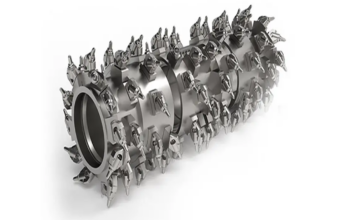At a Solingen-based kitchen knife company, quality control up until this point was done by eye. Artificial intelligence (AI) has now been employed for this purpose in a research study at the University of Wuppertal; the fundamental data was provided by Mahr’s MarSurf CM mobile 3D measuring instrument.
Since ancient times, Solingen has been producing knives, blades, and other cutlery. Even today, the city in the Bergisches Land region, which has had the official name prefix “Klingenstadt” since 2012, produces almost 90% of all German cutlery and flatware.
The majority of the time, the quality of these metal items is examined with the naked eye or by simple finger testing. But that might alter soon: Over the course of more than three years, the research project “MuPro2” at the University of Wuppertal’s Chair of Reliability Engineering and Risk Analysis (LZR) has examined how quality control can be carried out entirely automatically using artificial intelligence (AI) and thus completely independently of the human factor.
From the tip of the blade to the bolster
A producer of premium kitchen knives hired the chair as part of the project to start an automated, 100% accurate process for surface quality control. Up to 55 manual work processes, including shipping, are required to forge the knives from various steel alloys, finish them, and examine them. From the tip of the blade to the bolster, every detail must be exact to the micrometer.
The research group at the Wuppertal chair of Professor Stefan Bracke, led by Dr.-Ing. Marcin Hinz has already been working on the use of artificial intelligence and machine learning for ten years. They primarily work on research initiatives, collaborate with industry, and teach classes on highly technical goods and manufacturing procedures at the LZR. The researchers’ main areas of interest are product development and manufacturing data analysis.

Learning on the basis of huge amounts of data
We first required accurate 3D measurements, says Hinz, “in order to gather the appropriate information for an AI-supported picture evaluation of the knife surfaces. This is due to the requirement that cameras used for picture evaluation be capable of accurately detecting flaws and “learning” them ahead using AI. For this, enormous volumes of data are needed.
Mahr, a metrology expert, was involved in creating surface data. The researchers used a MarSurf CM mobile from Mahr’s GAM 3D Surface business unit in Oberhausen for two weeks to measure the roughness of the knives’ surfaces using 3D scans.
Based on confocal technology, Mahr’s MarSurf CM mobile’s optical measurement system typically takes five to ten seconds to complete a measurement. The 3D measuring tool can be used to analyze 3D constructions, measure geometries, and make ISO-compliant roughness measures. Structure and volume parameters are automatically evaluated.
The algorithm decides on the quality
The scientists created two test settings using cameras for the knife project, one for each of the many knife varieties. The first test setup had a normal camera system, while the second had a macro lens and two LED lighting as well. Knife blanks that had already been formed and finely honed were used as test specimens; this process is known technically as “plating” in Solingen. Almost 2,500 knives in total were to be put through testing, 1,750 of which used the Mahr tool.
An algorithm created specifically for the university was required to use the related Mahr evaluation program. With the use of this data, a number of machine learning algorithms were taught and assessed. The algorithm alone made the quality determination during the process.
Hit rate of almost 100 percent
The test sets, according to Marcin Hinz, delivered the intended outcomes: “The algorithm’s reliability was extraordinarily high, the rate was 80% with tactile measurement equipment and practically 100% with 3D equipment.”
The producer of knives is currently investigating the feasibility of implementing such sophisticated camera systems at upstream manufacturing facilities so that it can intervene in ongoing operations as needed, specifically avoiding scrap and reworking.
The short-term option of incorporating the measuring technology right into manufacturing was also considered, but it was rejected due to costs. “The device would suffer greatly from the production line’s abundance of dust, grime, oil residues, and chips. Moreover, the CM mobile has perfectly aided us in accumulating a firm foundation of information, “cites Hinz.
The project was initially only planned to be modest research and was not meant to grow so large. But, as Hinz notes, the success and the straightforward integration of 3D surface analysis, data evaluation, and algorithm teaching opened up a vast field of research. In this regard, one can anticipate follow-up initiatives.

Click on the following link Metrologically Speaking to read more such blogs on Metrology.









